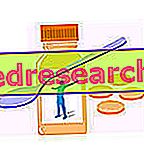Natural cold remedies draw from both popular and modern herbal medicine.
Effective Natural Remedies
Willow against colds
Willow is the common name of the Salix botanical genus (linneana classification); the common or weeping willow, also widespread in Italy, is called S. babilonica .

They contain good quantities of salicin and the following species are used for their extraction: S. alba, S. caprea, S. purpurea, S. aurita and S. nigra .
The bark of the willow can be used in the treatment of colds in different ways, in the form of syrup, decoction, medicated wine and powder obtained by drying the bark of twigs of 2-3 years.
Curiosity
In addition to curing a cold, these natural remedies also have astringent properties, curative of chronic rheumatism, antiseptic and febrifuge.
The willow decoction for topical use is useful in rheumatism packs.
It is hypothesized that the decoction of flowering catkins has calming and anafrodisiac properties.
Willow charcoal has absorbent and carminative properties.
Spirea ulmaria against colds
The spirea ulmaria ( Filipendula ulmaria L.) is a herbaceous plant, belonging to the Rosaceae family, which grows throughout Europe far from the sea coasts.
Rich in salicylic derivatives and flavonoids, it is another natural remedy with anti-inflammatory and antipyretic properties, potentially useful when a cold is accompanied by a mild febrile episode.
Curiosity
The spirea ulmaria is also endowed with features: diuretic, antispasmodic, antirheumatic, purifying and astringent.
It also relieves tooth pain and headaches.
Immunostimulant adaptogens against colds
A particularly sought-after category of natural remedies is that of adaptogens - immunostimulants.
Echinacea against colds
Echinacea is a botanical genus of perennial herbaceous plants, belonging to the Asteraceae family and originating in North America. The most studied and used for the extraction of the phytocomplex, is the E. purpurea species.
Echinacea is undoubtedly the major exponent of the group of immunostimulant adaptogenic plants.
Efficacy has been studied above all in preventive terms, however very useful if we consider that the official medicine is not yet able to cure the cold itself, but only to alleviate its symptoms.
Note : echinacea extract is not recommended: for more than 10 days, for children between 1 and 12, during pregnancy and lactation, and in drug therapy (because it inhibits the enzyme hyaluronidase).
Curiosity
The traditional use of echinacea, used by rural populations of North America, was mainly topical, as a cicatrizant, anti-infective and re-epithelising.
It was used against skin diseases, trauma wounds, snake bites, arthritis, pharyngitis and infectious diseases.
Ephedra against colds
Ephedra, or rather Ephedra, is a botanical genus of shrubs belonging to the Ephedraceae family.
That of ephedra is a drug extracted from the grinding of dried branches.
It is known for its vasoconstrictor and bronchodilator, therefore decongestant; as such, it is useful to counter hyperaemia in the vessels of the upper area pathways, induced by the inflammatory process.
Curiosity
From some plants of the genus Ephedra, ephedrine alkaloids are extracted with narcotic properties, from which methamphetamine is derived.
Elderberry and linden against colds
From the Elder (Genus Sambucus ) and from the Tiglio (Genus Tilia ) two natural diaphoretic remedies are extracted, that is capable of inducing an increase in sweating.
Sweating is a process that can improve and speed up the course of the cold, provided that it does not increase the risk of deterioration due to blows of air and other elements harmful to the condition.
Note : alongside the various phytotherapeutic extracts, variously combined together, the cold therapy benefits from a generous intake of fluids and rest.
See also: Cold Diet "
Natural Remedies or Drugs?
Most effective drugs against colds
Counter antipyretics
Aspirin and tachypirine (paracetamol) should be used only when the fever is very high (> 39 ° C).
Aspirin is not recommended below the age of 14, while an overdose of paracetamol can cause serious liver damage.
Decongestants
Pseudoephedrine is a vasoconstrictor, therefore a decongestant.
Its use can cause problems in the presence of hypertension, heart disease and intake of antidepressants or other stimulants; furthermore, if taken at the end of the day, it can make it difficult to fall asleep.
Antibiotics against colds
Not only are they generally useless, since the cold is a viral disease, but also potentially harmful, since they destroy the intestinal bacterial flora, which is fundamental for the development and maintenance of the body's immunity and defensive capacity.
Why choose natural remedies?
Aware of the side effects of synthetic drugs, many people seek help in natural cold remedies.
Importance and effectiveness of phytocomplexes with respect to drugs
The difference between the willow bark extracts standardized in salicin and the direct intake of aspirin is inherent in the concept of phytocomplex.
This term identifies the set of molecules directly extracted from a vegetable source, among which must obviously also include the characterizing active principle, that is the ascertained agent that determines the therapeutic effect.
In the vegetable source, however, the action of the active ingredient is not isolated, but assisted by other substances with synergistic or modulating action.
It follows that the administration of the natural remedy:
- It can cause minor contraindications compared to the use of the chemically isolated active principle
- It can be more effective in the long run.
Not surprisingly, therefore, while an effective dose of aspirin contains an average of 500 mg of acetyl-salicylic acid (corresponding to 794 mg of salicin), the recommended daily doses of willow extracts contain significantly lower amounts of salicin (60-120 mg), suggesting the presence of other active components with synergic and modulating action.
Vitamin C and Colds
Is vitamin C a natural remedy for colds?
The use of vitamin C at high dosages is not a practice accepted by official medicine, which in the light of the numerous studies accumulated over the years continues to consider it all in all ineffective in preventing colds, at least in ordinary people.
Instead, it could help:
- For athletes
- For all those who take low amounts of vitamin C with the diet
- For people suffering from metabolic impairments
- For those affected by intestinal malabsorption.
Real effectiveness of vitamin C against colds
Although in the circles of official medicine there is the common belief that vitamin C does not produce any beneficial effect in the treatment of colds, there are some studies (as well as empirical evidence of many habitual users) that emphasize the effectiveness of this vitamin against colds, provided taken at doses higher than one gram per day (1g / day). To learn more, read: Vitamin C against the Cold
Side effects of excess vitamin C
A dose higher than 1 g / day is much higher than the daily requirement of vitamin C, estimated at just under 0.1 g / day.
Fortunately, we are talking about a water-soluble vitamin, which as such has limited risks of overdose (it can cause gastrointestinal disorders such as heartburn and diarrhea, which can be mitigated by dividing the "megadose" into single daily assumptions by one gram).
The so-called " Tolerable upper intake level " (UL) is the intake dose of 2 grams / day, that is the maximum dose of vitamin C which presumably does not create toxicity problems in healthy individuals.
If used for therapeutic purposes, advocates of this practice recommend taking up to 2-8 grams of vitamin C a day. For preventive purposes and for the general well-being of the person, many experts recommend daily supplements of 180-1000 mg / day (0.18-0.1 g / day) throughout the year.
Zinc and Cold
Is zinc a natural remedy for colds?
Unlike vitamin C, zinc is used mainly for therapeutic purposes, while the habit of integrating it throughout the year is less widespread.
Real effectiveness of zinc against colds
Zinc seems to exert a significant and measurable effect against colds.
However, in the treatment of related symptoms, this natural remedy should be taken in the earliest stages (within 24 hours after the onset of symptoms), through confetti to be slowly dissolved in the mouth, or through special nasal sprays (which are not however free from side effects).
Side effects of excess zinc
The risks of using zinc for the treatment of colds are greater than those of vitamin C.
Excessive doses for periods longer than two weeks can cause anemia, nausea, vomiting, diarrhea and dysgeusia (distortion or loss of sense of taste).
Nasal sprays can also cause loss of olfactory sensitivity.
Thermal Water and Cold
Known since ancient times for its therapeutic effects, the thermal water has different therapeutic effects.
- Promotes the expulsion of mucus and flames the mucous membranes, relieving the nose and sinuses
- Fights some microorganisms responsible for chronic discomforts; in particular, the sulphured thermal water weakens the fungi responsible for the most insidious mycoses.
Thermal water therapy does not necessarily require going to a spa and can also be done at home, subject to the use of specific medical solutions.
Doses and Employment Methods
| Natural remedy | Dose and method of employment | Parts used, and, mechanism of action, warnings * |
| Echinacea ( Echinacea spp.) |
| Roots, rhizome and aerial parts. It is an adaptogenic drug, therefore potentially able to increase resistance to psychophysical stress, particularly to infections. It can cause allergic reactions in predisposed individuals. This natural remedy should not be taken by people with progressive systemic diseases, autoimmune disorders, connective tissue diseases or related diseases; It must also not be used together with immunosuppressants or hepatotoxic drugs. |
| Ephedrine ( Ephedra sinica ) |
| Aerial parts. It contains alkaloids with sympathomimetic activity, able to stimulate the release of nopradrenaline and interact directly with alpha and beta adrenergic receptors. The result is a generalized increase in metabolism; the decongestant properties, useful in the presence of colds, derive from its vasoconstrictor action. The sale as a supplement is prohibited in Italy due to the side risks of abuse, especially at a cardiovascular level (arrhythmias, palpitations, hypertension). |
| Willow ( Salix spp.) |
| Bark. Contains salicylin, an ester of salicylic acid that performs an anti-inflammatory and antipyretic action; it also contains substances with similar action. Caution in patients allergic to salicylates and in the presence of gastritis or peptic ulcers. |
| Elderberry ( Sambucus nigra .) |
| Flowers. The drug has diaphoretic properties; this natural remedy against colds therefore causes intense sweating. Avoid its use in dehydrated patients or in the presence of high fever. |
| Spirea olmaria ( Spirea ulmaria ) |
| Flowers, flowery aerial parts. Like the willow, this natural cold remedy contains salicylates; it therefore has anti-inflammatory, antipyretic and pain-relieving properties. Unfortunately, however, it is often taken in the form of infusions, which fail to extract significant amounts of salicylates from the drug. The hydroalcoholic extract (to be taken in drops) and the dry extract (to be taken in the form of opercula) instead enjoy aspirinimile properties. There are no known side effects or significant contraindications. |
| Linden ( Tillia cordata, T. platyphyllos ) |
| Flowers. The drug has diaphoretic and antispasmodic properties. There are no known side effects or significant contraindications. |
| C vitamin |
| This natural cold remedy can cause diarrhea and excessive stomach acid at high doses. In the case of megadoses (> 2 g / day), divide the daily intake into small doses of one gram. |
| Zinc |
| Avoid prolonged use beyond recommended doses. |
Other Natural Remedies
Being already widely described in various dedicated articles, we will only list them:
- Cold diet: above all it has a preventive role and favors a more rapid course of healing, as well as physical recovery
- Herbal teas for colds
- Fumigations.
Video
Combat Influenza and Winter Diseases with Natural Remedies
Directly from the studies of MypersonaltrainerTv, our herbalist Monica explains the natural remedies most used in phytotherapy to prevent and fight flu and winter illnesses.
Watch the video
X Watch the video on youtube



